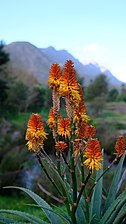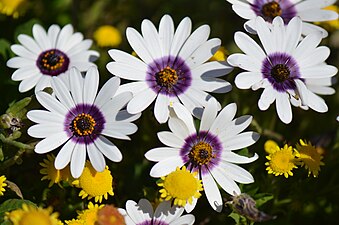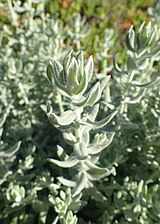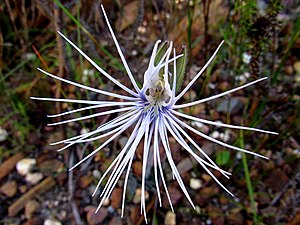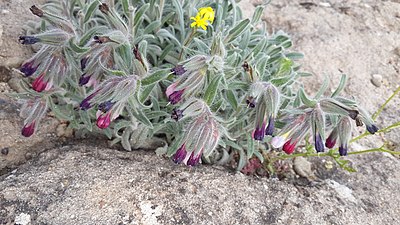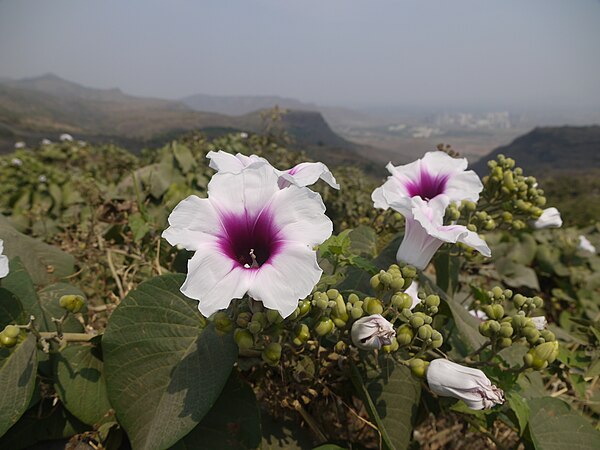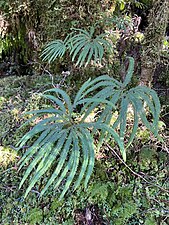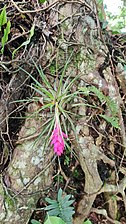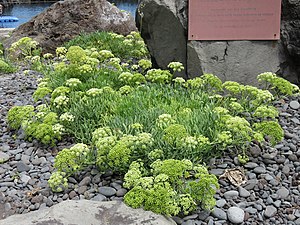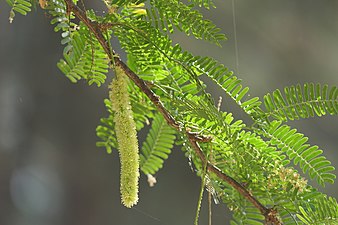ꯀꯝꯃꯟ꯭ꯁ:ꯋꯤꯀꯤꯅ ꯄꯥꯝꯕꯤꯁꯤꯡꯕꯨ ꯅꯨꯡꯁꯤꯖꯩ
ꯋꯤꯀꯤ ꯂꯚꯁ ꯄ꯭ꯂꯥꯟꯇꯁ ꯑꯁꯤ ꯃꯤꯁꯤꯡꯅꯥ ꯋꯤꯀꯤꯄꯤꯗꯤꯌꯥꯗꯥ ꯁꯤꯖꯤꯟꯅꯅꯕꯥ ꯄꯥꯝꯕꯤꯁꯤꯡꯒꯤ ꯐꯣꯇꯣ ꯂꯧꯅꯕꯥ ꯄꯨꯛꯅꯤꯡ ꯊꯧꯒꯠꯄꯥ ꯐꯣꯇꯣꯒ꯭ꯔꯥꯐꯤ ꯀꯟꯇꯦꯁ꯭ꯠ ꯑꯃꯅꯤ; ꯃꯁꯤꯒꯤ ꯄꯥꯟꯗꯃꯗꯤ ꯋꯤꯀꯤꯄꯤꯗꯤꯌꯥꯒꯤ ꯑꯥꯔꯇꯤꯀꯂꯁꯤꯡ ꯌꯦꯡꯕꯗꯥ ꯃꯇꯦꯡ ꯄꯥꯡꯅꯕꯥ ꯁꯤꯖꯤꯟꯅꯕꯥ ꯌꯥꯕꯥ ꯄꯥꯝꯕꯤꯁꯤꯡꯒꯤ ꯑꯋꯥꯡꯕꯥ ꯊꯥꯛꯀꯤ ꯏꯃꯦꯖꯁꯤꯡ ꯁꯦꯃꯒꯠꯄꯅꯤ꯫ ꯃꯈꯣꯏꯒꯤ ꯑꯆꯨꯝꯕꯥ ꯁꯥꯏꯟꯇꯤꯐꯤꯛ ꯃꯃꯤꯡꯒꯥ ꯂꯣꯏꯅꯅꯥ ꯇꯦꯒ ꯇꯧꯔꯕꯥ ꯑꯃꯁꯨꯡ ꯋꯤꯀꯤꯃꯤꯗꯤꯌꯥ ꯀꯝꯃꯟ꯭ꯁꯤꯡꯒꯥ ꯃꯥꯟꯅꯕꯥ ꯀꯣꯄꯤꯔꯥꯏꯠ ꯂꯥꯏꯁꯦꯟꯁꯀꯤ ꯃꯈꯥꯗꯥ ꯑꯄꯂꯣꯗ ꯇꯧꯔꯕꯥ ꯄꯤꯛꯆꯔꯁꯤꯡ ꯈꯛꯇꯅꯥ ꯏꯂꯤꯖꯤꯕꯜ ꯑꯣꯏꯒꯅꯤ꯫ ꯃꯁꯤꯅꯥ ꯋꯤꯀꯤꯄꯤꯗꯤꯌꯥ ꯑꯦꯗꯤꯇꯔꯁꯤꯡꯗꯥ ꯑꯆꯨꯝꯕꯥ ꯋꯤꯀꯤꯄꯤꯗꯤꯌꯥ ꯑꯥꯔꯇꯤꯀꯜꯁꯤꯡꯗꯥ ꯐꯣꯇꯣꯒ꯭ꯔꯥꯐꯁꯤꯡ ꯁꯤꯖꯤꯟꯅꯕꯗꯥ ꯃꯇꯦꯡ ꯄꯥꯡꯏ꯫ ꯁꯕꯃꯤꯁꯅꯁꯤꯡ ꯈꯉꯗꯣꯀꯄꯗꯥ ꯃꯇꯦꯡ ꯄꯥꯡꯅꯕꯥ, ꯊꯧꯔꯝ ꯑꯁꯤ iNaturalist; ꯀꯝꯄꯤꯇꯤꯁꯅꯒꯤ ꯃꯇꯨꯡꯗꯥ ꯀ꯭ꯕꯥꯂꯤꯐꯥꯏꯌꯤꯡ ꯁꯕꯃꯤꯁꯅꯁꯤꯡ ꯑꯁꯤ ꯋꯤꯀꯤꯄꯤꯗꯤꯌꯥꯗꯥ ꯁꯤꯖꯤꯟꯅꯅꯕꯥ ꯀꯝꯃꯅꯁꯇꯥ ꯑꯄꯂꯣꯗ ꯇꯧꯒꯅꯤ꯫
ꯐꯣꯇꯣꯒ꯭ꯔꯥꯐꯁꯤꯡ ꯑꯁꯤ ꯄꯥꯝꯕꯤ ꯑꯁꯤꯒꯤ ꯋꯤꯀꯤꯄꯤꯗꯤꯌꯥꯒꯤ ꯑꯥꯔꯇꯤꯀꯜ ꯑꯁꯤ ꯀꯌꯥ ꯌꯥꯝꯅꯥ ꯐꯖꯅꯥ ꯁꯤꯖꯤꯟꯅꯕꯥ ꯌꯥꯕꯒꯦ ꯍꯥꯌꯕꯗꯨꯒꯤ ꯃꯇꯨꯡ ꯏꯟꯅꯥ ꯌꯦꯡꯁꯤꯅꯒꯅꯤ꯫ ꯄꯥꯝꯕꯤ ꯄꯨꯝꯅꯃꯛ ꯅꯠꯠꯔꯒꯥ ꯄꯥꯝꯕꯤꯒꯤ ꯁꯔꯨꯀꯁꯤꯡ ꯍꯥꯌꯕꯗꯤ ꯃꯁꯤꯒꯤ ꯃꯍꯩ-ꯃꯔꯣꯡꯁꯤꯡ, ꯄꯥꯝꯕꯤꯁꯤꯡ, ꯃꯅꯥ-ꯃꯁꯤꯡ, ꯎꯅꯁꯥ, ꯃꯅꯥ-ꯃꯁꯤꯡ, ꯄꯦꯔꯥꯁꯥꯏꯇꯁꯤꯡ, ꯂꯥꯌꯅꯥ, ꯑꯃꯁꯨꯡ/ꯅꯠꯇ꯭ꯔꯒꯥ ꯃꯔꯨꯃꯁꯤꯡ ꯑꯁꯤꯅꯆꯤꯡꯕꯥ ꯐꯣꯇꯣꯒ꯭ꯔꯥꯐꯁꯤꯡ ꯂꯧꯕꯗꯥ ꯄꯨꯛꯅꯤꯡ ꯊꯧꯒꯠꯂꯤ꯫ ꯐꯣꯇꯣꯒ꯭ꯔꯥꯐꯁꯤꯡ ꯑꯁꯤ ꯃꯤꯑꯣꯏ ꯑꯃꯃꯃꯒꯤ ꯑꯣꯏꯅꯥ ꯅꯠꯠꯔꯒꯥ ꯃꯈꯜ ꯑꯃꯈꯛꯇꯗꯥ ꯃꯤꯠꯌꯦꯡ ꯊꯃꯗꯨꯅꯥ ꯈꯣꯃꯖꯤꯅꯕꯥ ꯑꯃꯥ ꯑꯣꯏꯅꯥ ꯄꯤꯁꯤꯅꯕꯥ ꯌꯥꯏ꯫
-
Gladiolus maculatus
-
Helichrysum dasyanthum
-
Aloe arborescens
-
Dimorphotheca pluvialis
-
Helichrysum dasyanthum
-
Bartholina burmanniana
-
Flower
ꯃꯇꯝ
ꯁꯔꯨꯛ ꯌꯥꯔꯤꯕꯁꯤꯡꯅꯥ ꯲꯰꯲꯳ꯒꯤ ꯖꯅꯨꯋꯥꯔꯤ ꯑꯃꯁꯨꯡ ꯐꯦꯕ꯭ꯔꯨꯋꯥꯔꯤ ꯊꯥꯒꯤ ꯃꯇꯝ ꯑꯃꯠꯇꯗꯥ ꯑꯥꯏꯅꯦꯆꯔꯦꯂꯤꯁ꯭ꯠ ([$꯱ ꯋꯤꯀꯤ ꯂꯚꯁ ꯄ꯭ꯂꯥꯟꯇꯁ ꯄ꯭ꯔꯣꯖꯦꯛꯇ])ꯗꯥ ꯐꯣꯇꯣꯒ꯭ꯔꯥꯐꯁꯤꯡ ꯊꯥꯕꯥ ꯌꯥꯒꯅꯤ꯫
Winners
The judging is complete and we are please to announce the following winners of Wiki Loves Plants 2023. Regrettably we received no qualifying submissions in our special Fynbos category so those prizes will go unclaimed this year. Winning photographs were picked based on 1) their ability to most effectively illustrate a plant for use on Wikipedia, 2) usefulness of the photograph in helping others identify other species, 3) background illustration of the species habitat and 4) aesthetic appeal.
We received a total of 624 qualifying submissions detailing 349 plant species.
First prize
-
Ipomoea campanulata by Dinesh Valke
Second prizes
Our five 2nd place winners are:
-
Argyranthemum pinnatifidum by Paulo SP
-
Sticherus cunninghamii by Mike Dickison
-
Tillandsia stricta by tiagolubiana
-
Crithmum maritimum by Paulo SP
-
Prosopis juliflora by Dinesh Valke
ꯃꯅꯥ ꯄꯤꯕ
ꯄꯤꯀꯆꯔꯁꯤꯡ ꯑꯁꯤ ꯃꯈꯣꯌꯒꯤ ꯑꯦꯅꯁꯥꯏꯛꯂꯣꯄꯤꯗꯤꯛ ꯀ꯭ꯕꯥꯂꯤꯇꯤꯒꯤ ꯃꯇꯨꯡ ꯏꯟꯅꯥ ꯋꯥꯌꯦꯜ ꯇꯧꯒꯅꯤ꯫ ꯍꯥꯌꯕꯗꯤ ꯃꯈꯣꯌꯒꯤ ꯃꯁꯥꯒꯤ ꯑꯣꯏꯕꯥ ꯋꯤꯀꯤꯄꯤꯗꯤꯌꯥ ꯑꯥꯔꯇꯤꯀꯂꯗꯥ ꯋꯥꯍꯪ ꯍꯪꯂꯤꯕꯥ ꯄꯥꯝꯕꯤ ꯃꯈꯂꯁꯤꯡ ꯑꯁꯤ ꯃꯌꯦꯛ ꯁꯦꯡꯅꯥ ꯈꯉꯗꯣꯀꯄꯥ ꯉꯝꯕꯒꯤ ꯃꯑꯣꯡ ꯑꯁꯤꯅꯤ꯫ ꯃꯅꯥ ꯄꯨꯝꯅꯃꯛ ꯑꯦꯃꯥꯖꯣꯟ ꯒꯤꯐꯠ ꯀꯥꯔꯗꯀꯤ ꯃꯑꯣꯡꯗꯥ ꯄꯤꯒꯅꯤ ꯑꯃꯁꯨꯡ ꯃꯁꯤꯒꯤ ꯃꯃꯜ ꯑꯁꯤ ꯌꯨ.ꯑꯦꯁ.
- ꯈ꯭ꯋꯥꯏꯗꯒꯤ ꯐꯕꯥ ꯐꯣꯇꯣ: $ ꯱꯰꯰ - ꯃꯅꯥ ꯱ ꯄꯤꯒꯅꯤ꯫
- ꯲ꯁꯨꯕꯥ ꯈ꯭ꯕꯥꯏꯗꯒꯤ ꯐꯕꯥ ꯐꯣꯇꯣ: $ ꯵꯰ - ꯃꯅꯥ ꯵ ꯄꯤꯒꯅꯤ꯫
- ꯋꯤꯀꯤꯄꯤꯗꯤꯌꯥꯗꯥ ꯈ꯭ꯋꯥꯏꯗꯒꯤ ꯐꯕꯥ ꯁꯤꯖꯤꯟꯅꯕꯥ: ꯗꯣꯂꯔ ꯵꯰ - ꯃꯅꯥ ꯲ ꯄꯤꯒꯅꯤ꯫
ꯃꯁꯤꯒꯤ ꯃꯅꯥ ꯑꯁꯤ ꯀꯝꯄꯤꯇꯤꯁꯟ ꯑꯁꯤꯗꯥ ꯄꯤꯈꯤꯕꯥ ꯑꯃꯁꯨꯡ ꯋꯤꯀꯤꯄꯤꯗꯤꯌꯥꯗꯥ ꯄꯦꯖ ꯑꯃꯥ ꯏꯂꯁ꯭ꯇꯔ ꯇꯧꯕꯗꯥ ꯁꯤꯖꯤꯟꯅꯈꯤꯕꯥ ꯐꯣꯇꯣ ꯑꯃꯗꯥ ꯄꯤꯕꯅꯤ꯫
ꯁꯔꯨꯛ ꯌꯥꯔꯤꯕꯁꯤꯡꯅꯥ ꯃꯁꯤꯡ ꯌꯥꯝꯂꯕꯥ ꯃꯅꯥꯁꯤꯡ ꯂꯧꯕꯥ ꯌꯥꯒꯅꯤ꯫ ꯐꯤꯅꯕꯣꯁ ꯁ꯭ꯄꯦꯁꯤꯁꯀꯤ ꯄꯤꯀꯆꯔꯁꯤꯡ ꯑꯁꯤ ꯃꯔꯨꯑꯣꯏꯕꯥ ꯀꯝꯄꯤꯇꯤꯁꯟ ꯑꯃꯁꯨꯡ ꯐꯤꯅꯕꯣꯁ ꯑꯈꯟꯅꯕꯥ ꯃꯅꯥ ꯑꯅꯤꯃꯛꯀꯤꯗꯃꯛ ꯏꯂꯤꯖꯤꯕꯜ ꯑꯣꯏꯒꯅꯤ꯫
ꯑꯈꯟꯅꯕꯥ ꯀꯦꯇꯦꯒꯣꯔꯤ
ꯐꯤꯅꯕꯣꯁ ꯁ꯭ꯄꯦꯁꯤꯃꯦꯟ ꯑꯃꯒꯤ ꯈ꯭ꯕꯥꯏꯗꯒꯤ ꯐꯕꯥ ꯐꯣꯇꯣꯒꯤꯗꯃꯛ ꯑꯈꯟꯅꯕꯥ ꯃꯅꯥ ꯑꯃꯥ ꯄꯤꯒꯅꯤ꯫
- Best picture: A 5 day stay for two at Cedarpeak Mountain Guest Cottages located in the Groot Winterhoek mountain range of the Western Cape, South Africa. Travel costs not included + $60 gift voucher.
- 2nd best picture: $50 – 2 prizes will be awarded
- Best use on Wikipedia: $50 – 1 prizes will be awarded
This prize is awarded to a picture that was submitted to the competition and used to illustrate a page on Wikipedia.
Judging will take place during the month of March and winners will be announced in April 2023.
About
Wiki Loves Plants is a photography contest hosted by Wikimedia South Africa that seeks to encourage people to take pictures of plants for use on Wikipedia. The purpose of the competition is to create high quality images of plants that can be used to help illustrate Wikipedia articles.
Only pictures that have been tagged with their correct scientific name and uploaded under a Creative Commons licence compatible with Wikimedia Commons (such as CC-BY-SA) are eligible. This helps Wikipedia editors to use the photographs on the correct Wikipedia articles.
The competition will be held over the months of January and February 2023.
Photographs will be judged on how well they can be used to illustrate the plant's Wikipedia article. Photographs of the whole plant or parts of the plant such as its flowers, leaves, bark, wood, seeds, parasites, disease, and/or roots are encouraged. Photographs can be submitted individually or as a collection focusing on a single species.
To enter
- 1) You will only be able to participate on iNaturalist as the iNaturalist website will allow us to identify submissions. Once you have an iNaturalist account you will need to join the Wiki Loves Plants project page. You can participate anytime between 15 January and the end of February 2023; submitted photographs are allowed to have been taken at any time or date.
- 2) All photographs have to be submitted with a Wikimedia Commons compatible copyright licence. Any one of the following Creative Commons copyright licences are allowed:
- CC0 (Creative Commons 0)
- CC-BY (Creative Commons – Attribution)
- CC-BY-SA (Creative Commons – Attribution – Share Alike)
- 3) Tag the photographs you wish to submit with the tag "WLP2023"
- 4) Make sure the observation ID is 'research grade' by asking people on iNaturalist to help confirm the correct taxonomy of the plant. All submissions will have until the end of March to reach research grade.
Then you are done!
Although this event is being hosted on iNaturalist we have yet to find a way to sort photographs out by copyright licence. So we might need to add a requirement that participants upload their submissions to Commons under the category "Wiki Loves Plants 2023".



